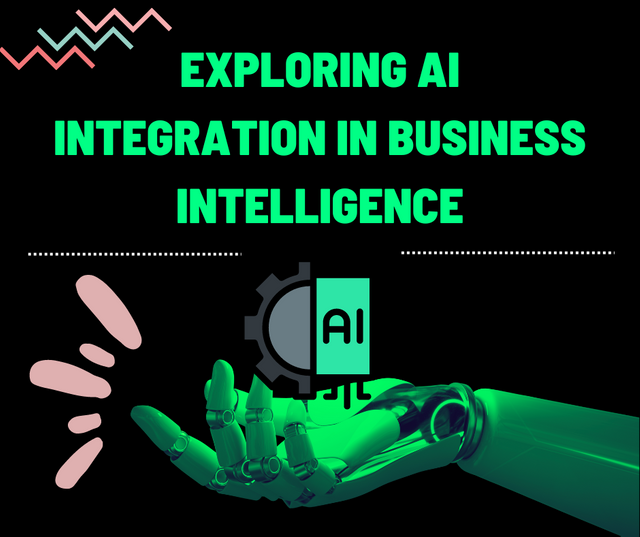Exploring AI Integration in Business Intelligence
In today's fast-paced digital era, the integration of Artificial Intelligence in various business processes has become more than a trend; it's a necessity. As we navigate the complex landscape of technological advancements, one area that stands out is the intersection of AI and Business Intelligence (BI). Let's delve into the fascinating realm of "Exploring AI Integration in Business Intelligence" and understand how this synergy is reshaping the way businesses operate.
Understanding Business Intelligence: What is it?
At its core, Business Intelligence involves collecting, analyzing, and interpreting data to facilitate informed decision-making. BI systems, utilizing a combination of tools, technologies, and processes, transform raw data into actionable insights. This analytical approach enables organizations to make strategic decisions that drive growth and efficiency. In essence, Business Intelligence answers the crucial question, “What is business intelligence?” by providing a systematic framework for leveraging data to gain valuable insights for better decision-making.
The Rise of Artificial Intelligence
AI, on the other hand, has undergone a remarkable evolution over the years. From rule-based systems to machine learning algorithms, AI has found applications across diverse sectors, including healthcare, finance, and manufacturing. The ability of AI to process vast amounts of data and derive patterns has made it a valuable asset for businesses seeking a competitive edge.
Benefits of AI Integration in Business Intelligence
The integration of AI into BI brings forth a myriad of benefits. Firstly, it enhances data analysis capabilities, allowing organizations to glean deeper insights from their data. This, in turn, leads to more informed and strategic decision-making processes. Real-time insights further enable businesses to respond promptly to changing market dynamics, gaining a significant edge in today's fast-paced business environment.
Challenges in AI Integration
While the benefits are substantial, the journey towards AI integration in BI is not without challenges. Data privacy concerns loom large, requiring organizations to navigate the delicate balance between leveraging data for insights and respecting user privacy. Integration complexities and the associated costs are also hurdles that need careful consideration.
Choosing the Right AI Tools for BI
Selecting the right AI tools for BI is a critical decision. Organizations need to evaluate tools based on their specific needs, considering factors such as scalability, ease of integration, and the ability to handle diverse data types. Some popular AI tools in the BI domain include Tableau, Power BI, and IBM Cognos.
Implementing AI in BI: A Step-by-Step Guide
For businesses embarking on the AI integration journey, a step-by-step approach is crucial.
Planning and Strategy:
The first crucial step in integrating AI into Business Intelligence involves comprehensive planning and strategy development. This includes identifying business goals, assessing data needs, and outlining the specific AI applications that align with organizational objectives. During this phase, it is essential to engage key stakeholders and establish a roadmap for the successful integration of AI into the existing BI framework.
Data Preparation and Cleansing:
Following the planning stage, meticulous attention to data preparation and cleansing is necessary. This step involves aggregating relevant datasets, ensuring data quality, and addressing any inconsistencies. AI algorithms thrive on accurate and well-organized data, making this phase integral to the success of the implementation. Data preprocessing techniques, such as normalization and outlier detection, play a crucial role in preparing the data for effective AI analysis.
Integration and Testing:
The final step involves the integration of AI capabilities into the BI system and thorough testing to ensure seamless functionality. This includes deploying AI algorithms, connecting them with the existing BI tools, and validating their performance. Rigorous testing is essential to identify and rectify any issues, ensuring that the AI-enhanced BI system operates efficiently. Stakeholder feedback and iterative testing contribute to refining the integration, making certain that the implemented AI components align with the overarching BI goals.
AI-Driven Predictive Analytics in BI
Predictive analytics, empowered by AI, is a game-changer in BI. The ability to forecast future trends, identify potential risks, and optimize decision-making processes positions businesses for sustained success. This section explores how AI enhances predictive analytics, offering a glimpse into the future of data-driven insights.
Future Trends in AI and BI
As technology continues to advance, the future holds exciting prospects for AI and BI. Emerging technologies such as natural language processing and augmented analytics are set to redefine the landscape. Predictions indicate an increasingly symbiotic relationship between AI and BI, with AI becoming an integral part of everyday business operations.
AI Ethics in Business Intelligence
Addressing ethical considerations is paramount in the integration of AI in BI. Ensuring responsible AI practices involves transparency, fairness, and accountability. This section explores the ethical dimensions of AI applications in BI and emphasizes the need for a thoughtful and ethical approach to technology adoption.
Measuring Success: Key Performance Indicators (KPIs)
To gauge the effectiveness of AI integration in BI, organizations must define and monitor Key Performance Indicators (KPIs). Identifying the right KPIs ensures a comprehensive evaluation of the impact of AI on business processes, ranging from improved efficiency to increased profitability.
Industry-Specific AI Integration
Industries vary in their requirements, and AI solutions must be tailored accordingly. Success stories from different sectors highlight the adaptability and effectiveness of AI integration. Whether in healthcare, finance, or manufacturing, AI proves to be a versatile tool that can be customized to address industry-specific challenges.
Training and Upskilling for AI Integration
The human element remains critical in AI integration. Ensuring that employees are well-trained and equipped to harness the power of AI is essential. This section explores the importance of ongoing training and upskilling programs, empowering the workforce to leverage AI tools effectively.
Conclusion
The exploration of AI integration in Business Intelligence unveils a world of possibilities for businesses willing to embrace technological advancements. The synergistic relationship between AI and BI propels organizations towards data-driven decision-making, operational efficiency, and sustained success. As we navigate the future, the strategic integration of AI in BI processes will likely remain a cornerstone for businesses seeking a competitive advantage.
